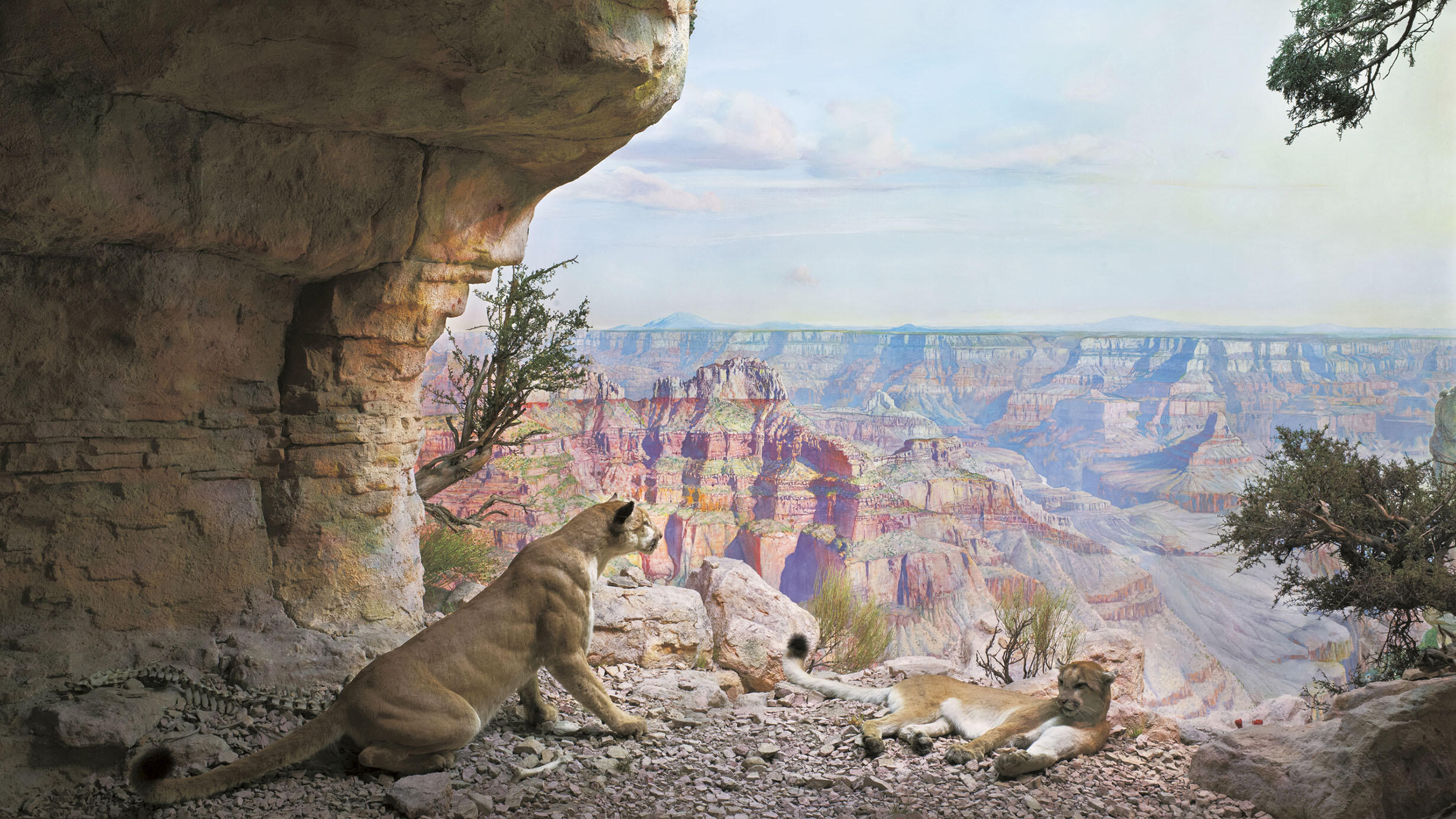Cougar (Mountain Lion)
Part of Hall of North American Mammals.
 C. Chesek/© AMNH
C. Chesek/© AMNH Summer, Grand Canyon, Arizona
Arizona’s Grand Canyon National Park offers ideal habitat for cougars: shade to escape the heat, rugged terrain in which to ambush prey and nooks to eat carcasses in private. Typically solitary, males and females travel together only during the few days out of the year when they are mating.
These agile cats actually lived across the United States until European settlers encroached. By the early 1900s, nearly all cougars east of the Rocky Mountains had been exterminated, like most other large predators in North America. Cougars are now making a comeback in some areas—even developed ones, where the risk of conflict with humans is real.
Grand Canyon
View from Point Sublime, North Rim
The scale of Arizona’s Grand Canyon—both in space and time—is almost inconceivably vast. At its deepest, the canyon’s rock walls plunge more than a mile (1.6 kilometers), carved by the Colorado River and its tributaries. The oldest rock layer formed 1,840 million years ago. That was long before North America took its current shape and before multicellular life emerged.
Eventually, the rock layers uplifted, forming a high plateau. The plateau was still rising 17 million years ago when the rivers began to cut channels in the soft rock. The uplifted land made the rivers flow over a steeper grade, accelerating erosion, so the chasm took shape deeply and quickly. By 1.2 million years ago, the layers were all exposed—one of the best visible records of geological history on Earth.